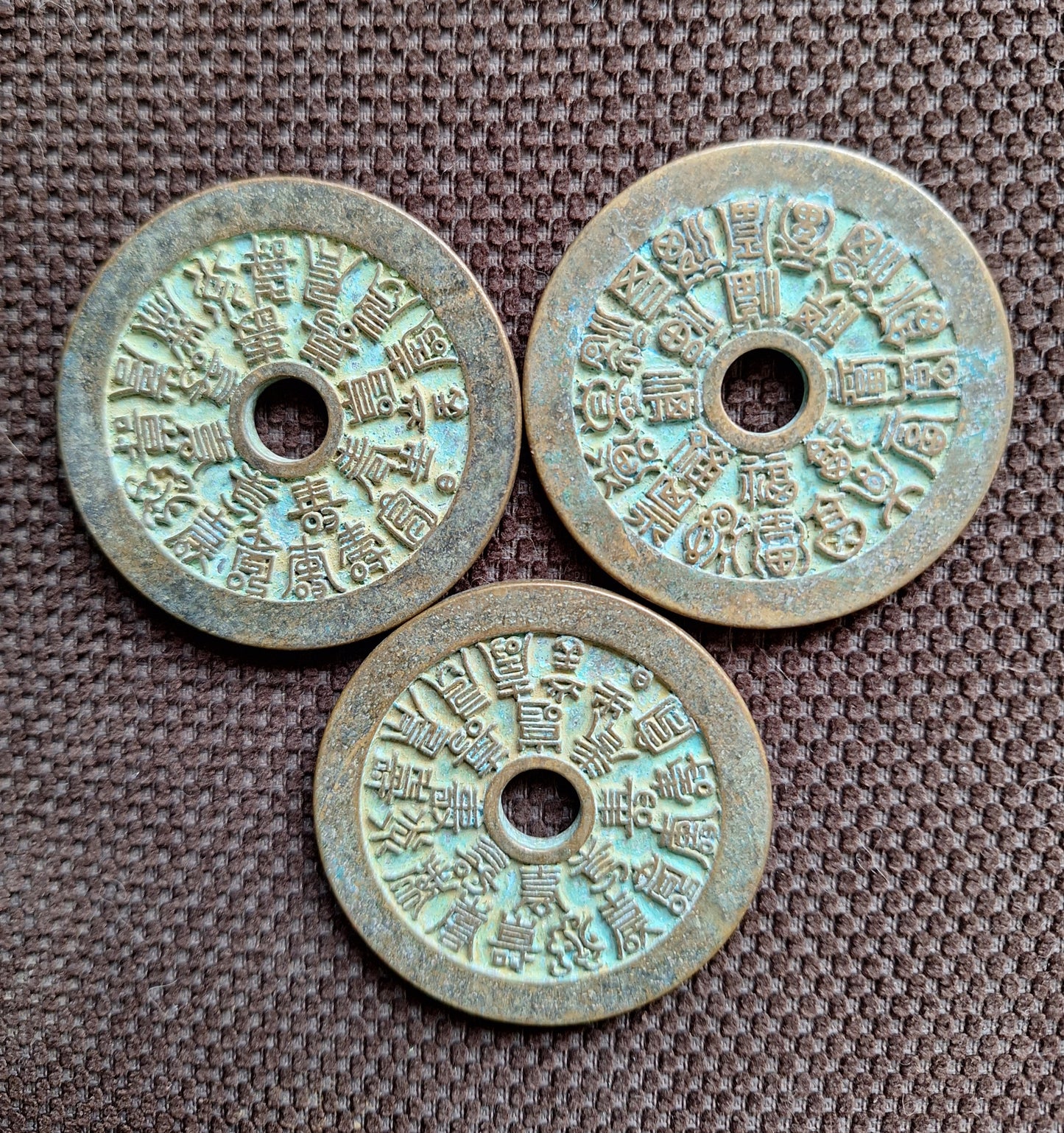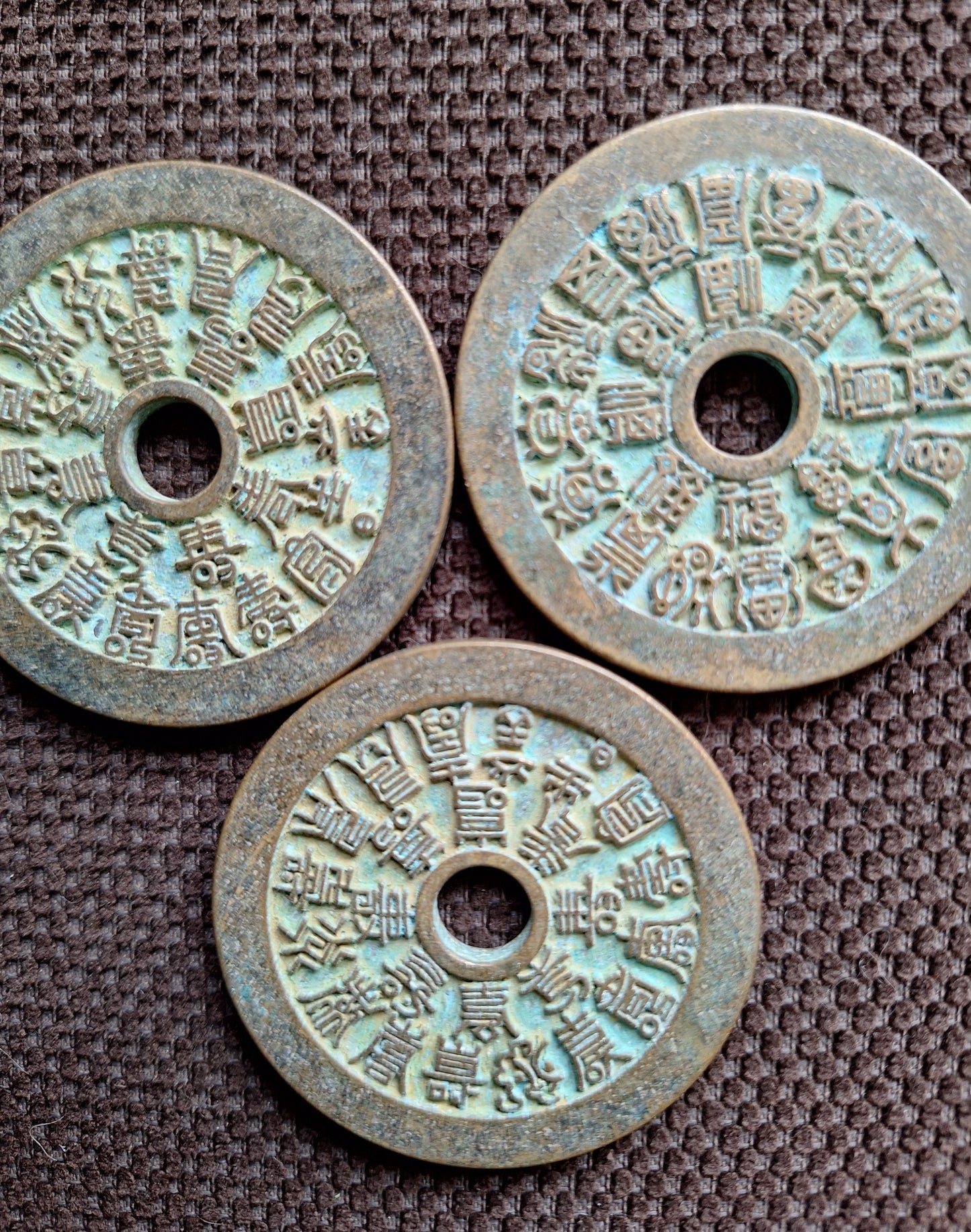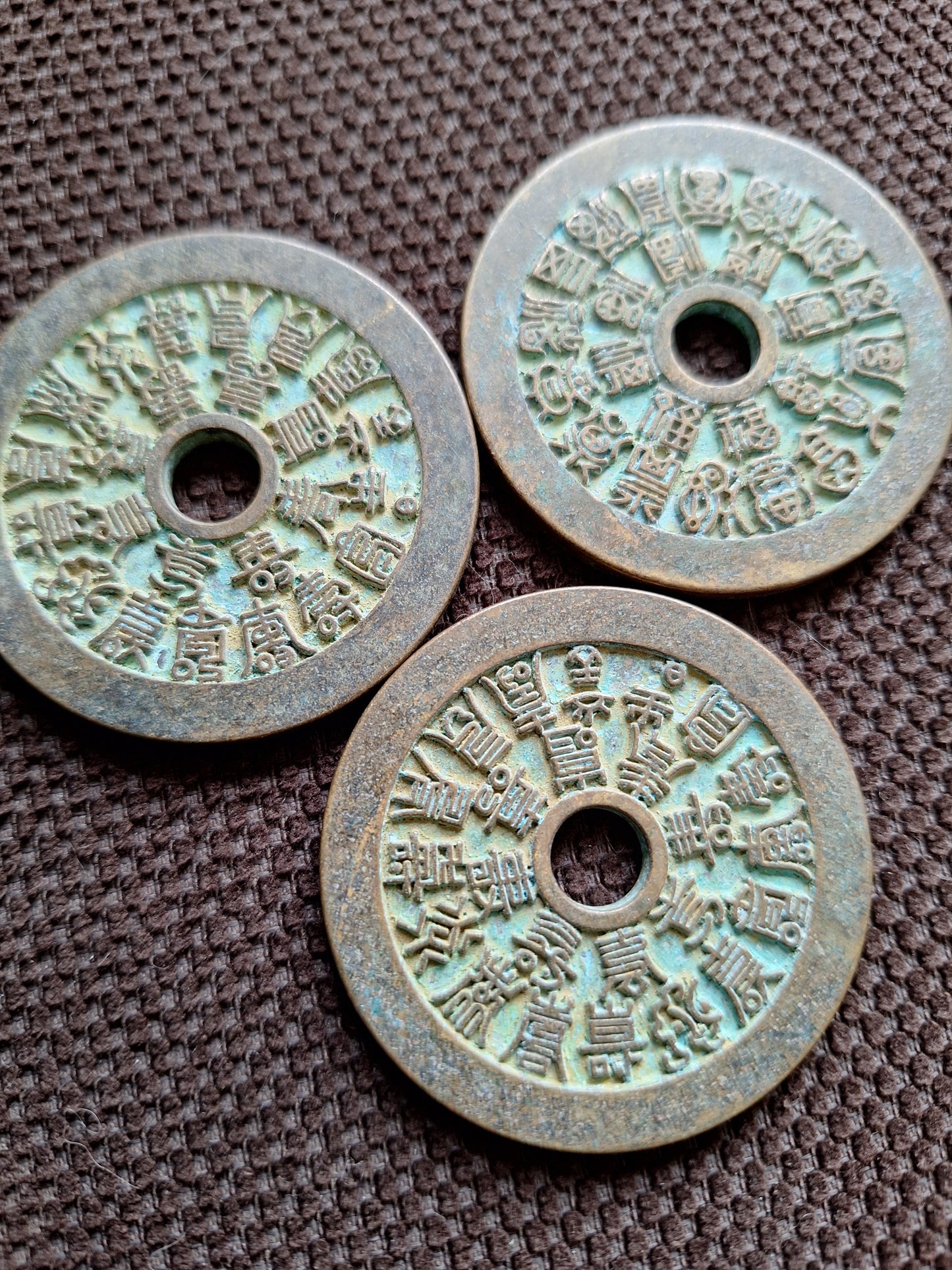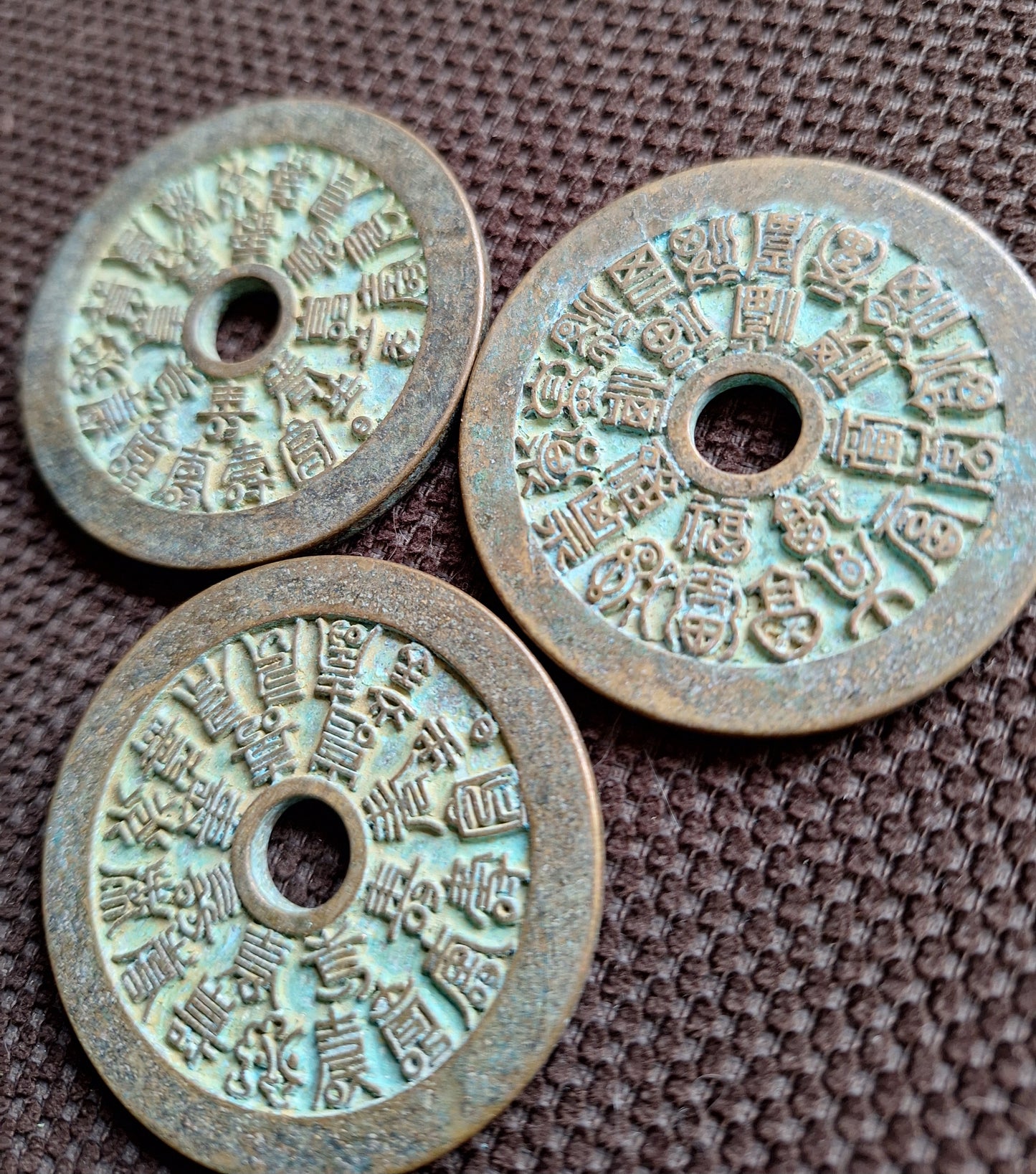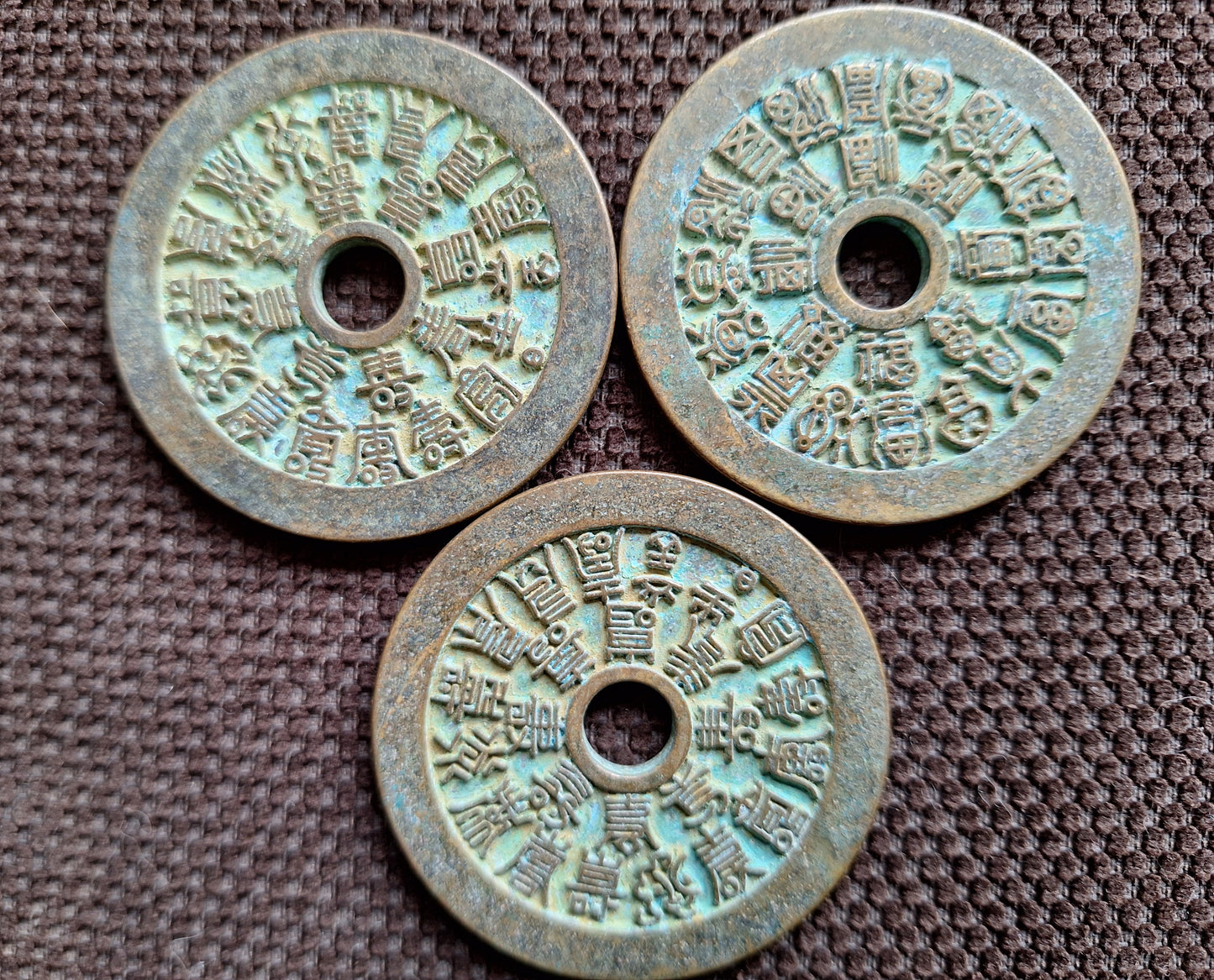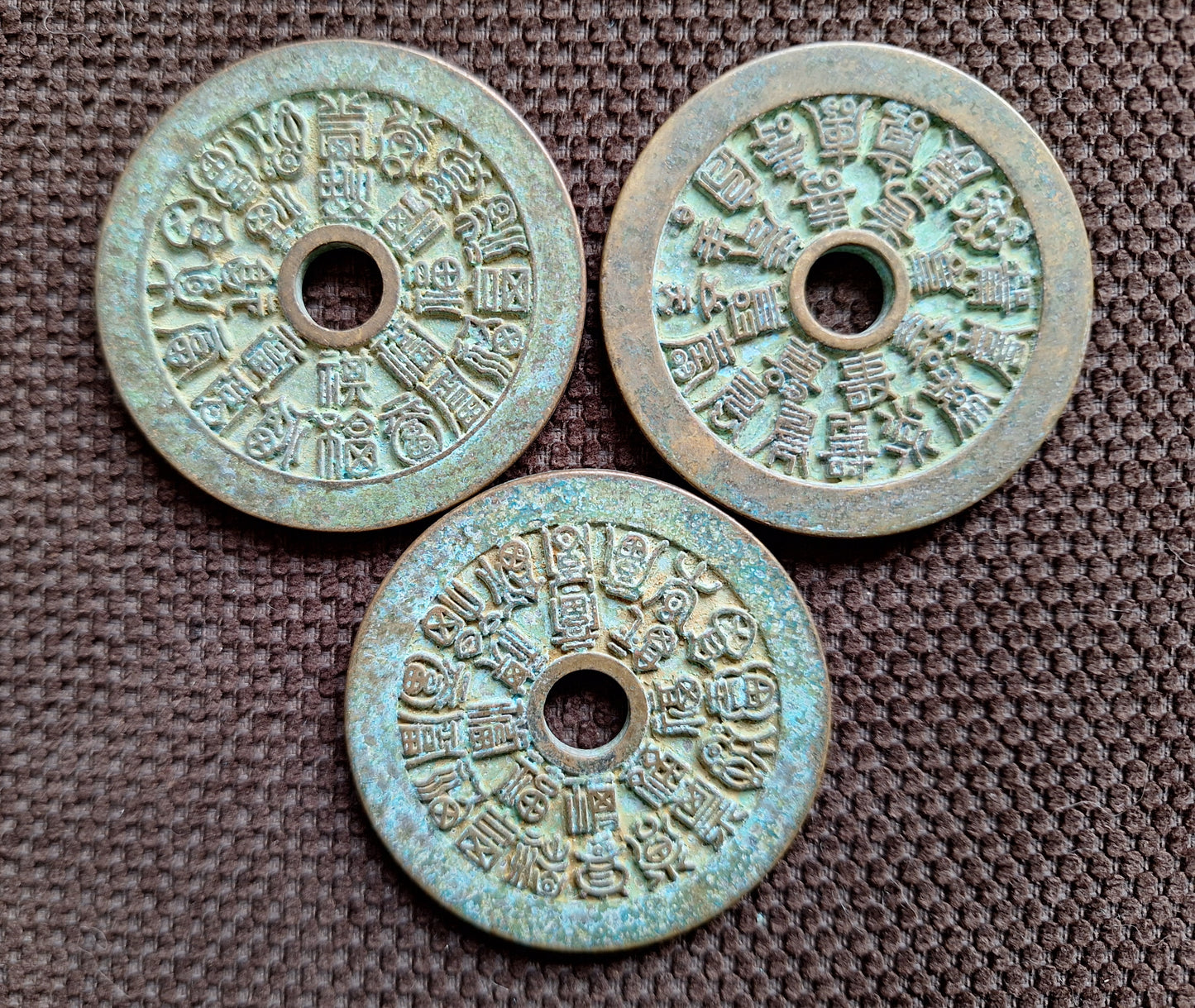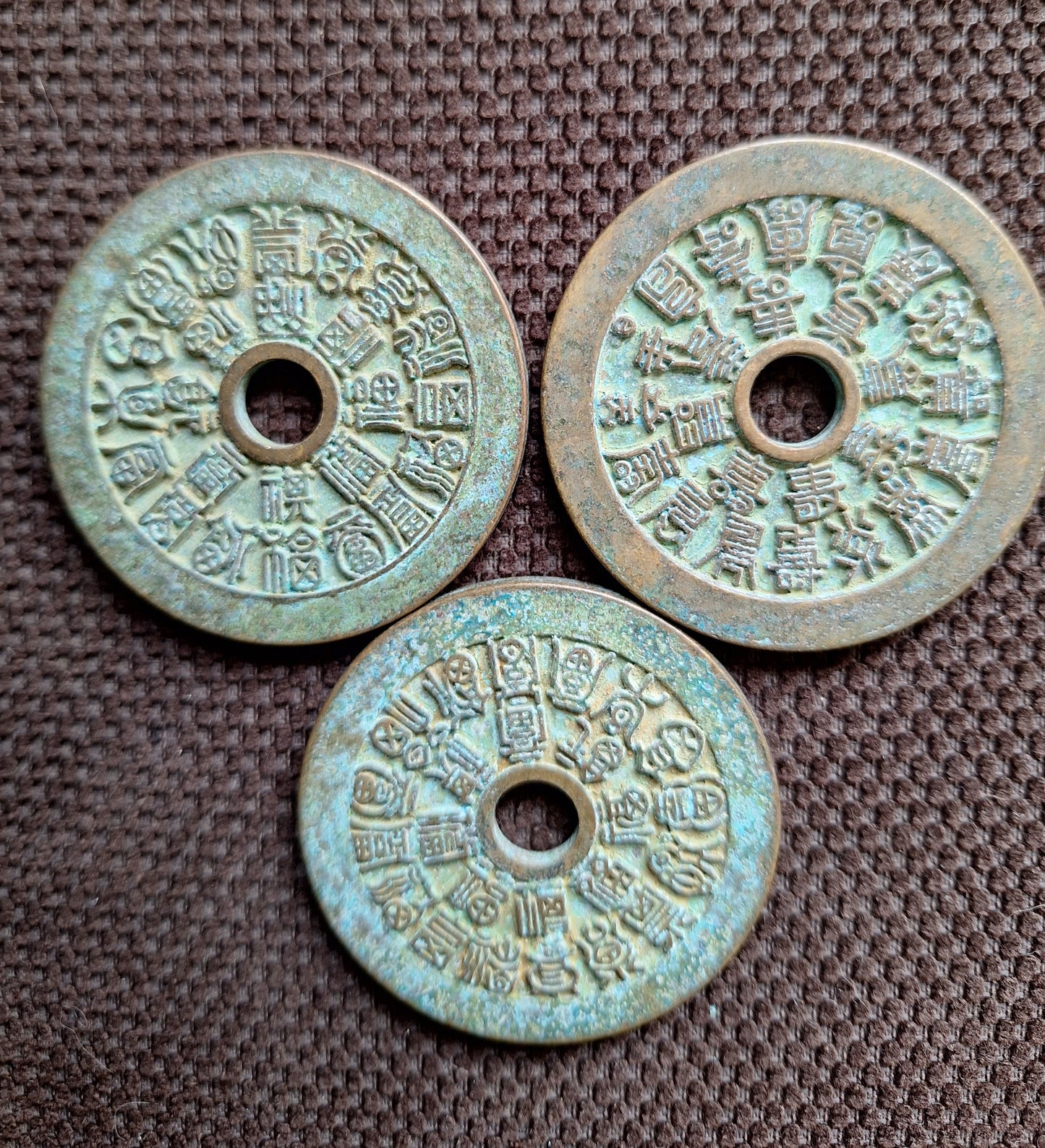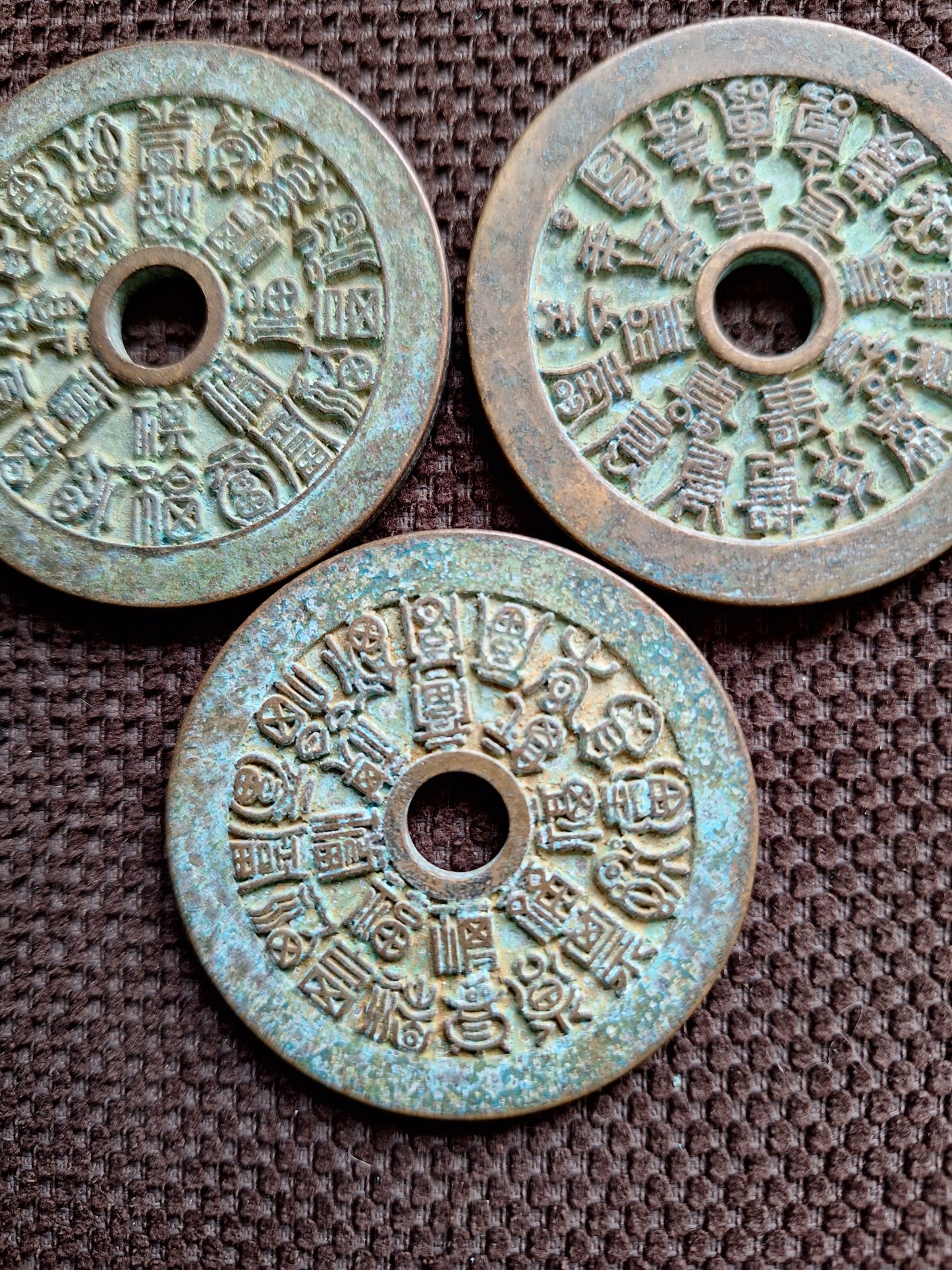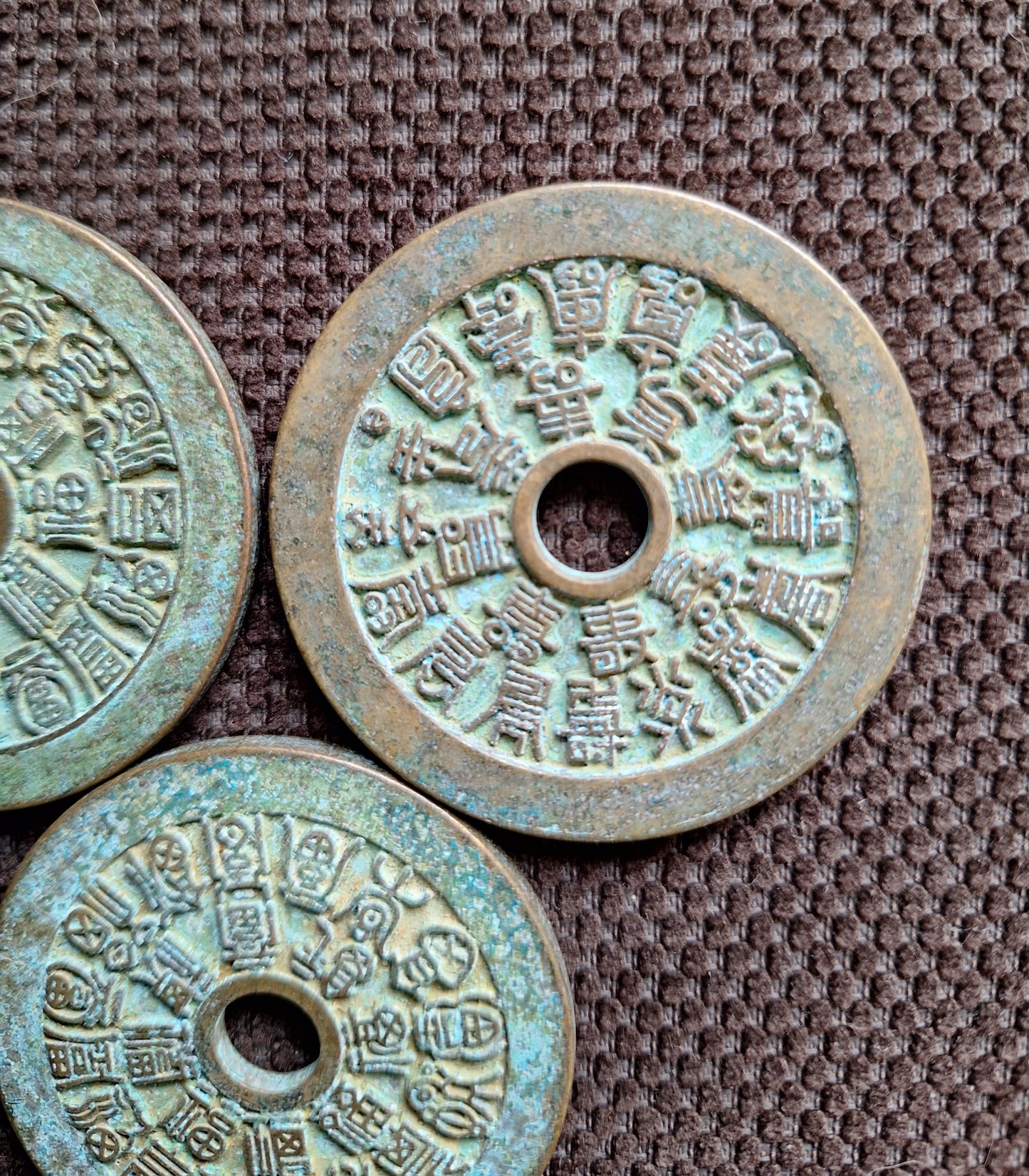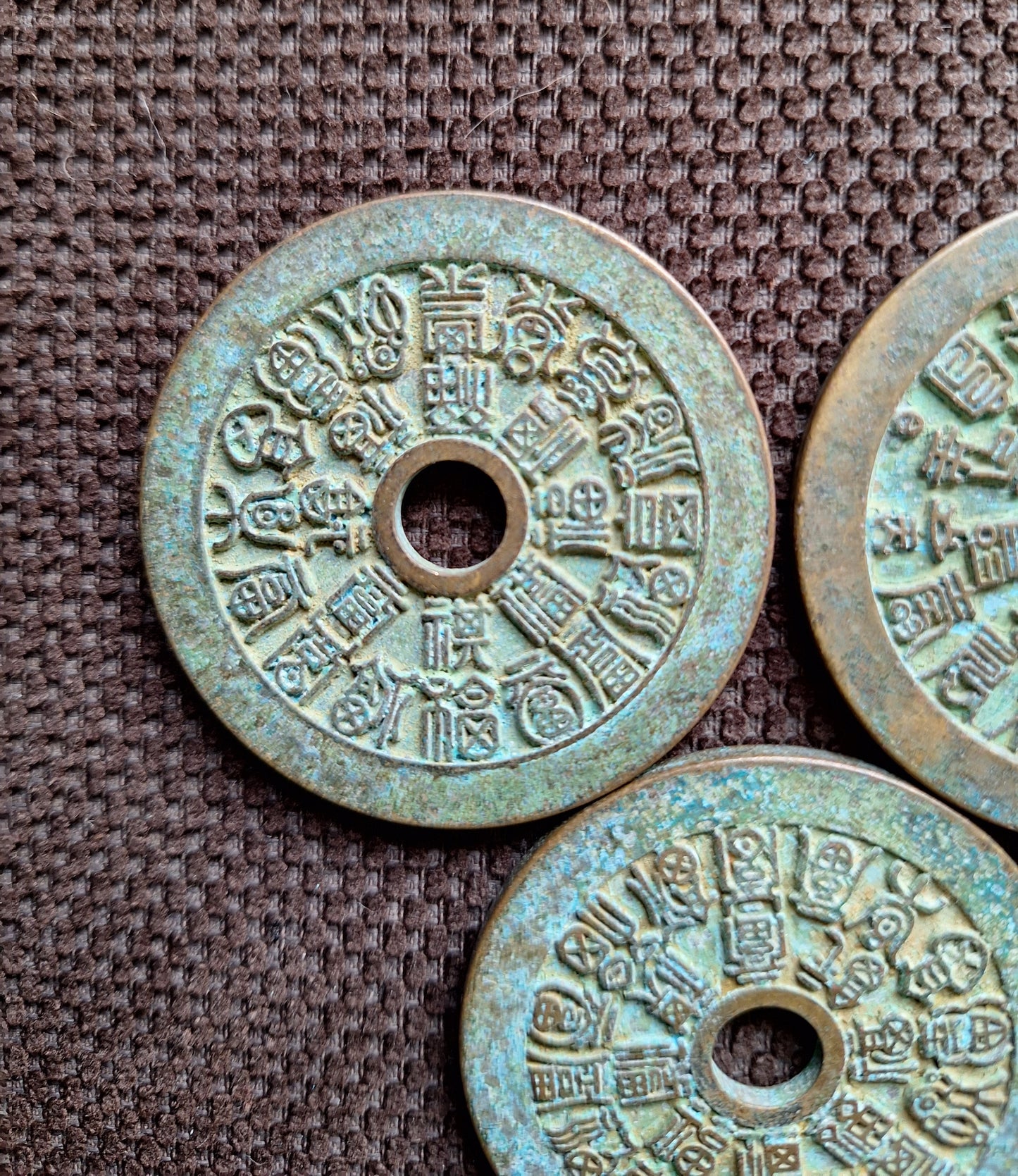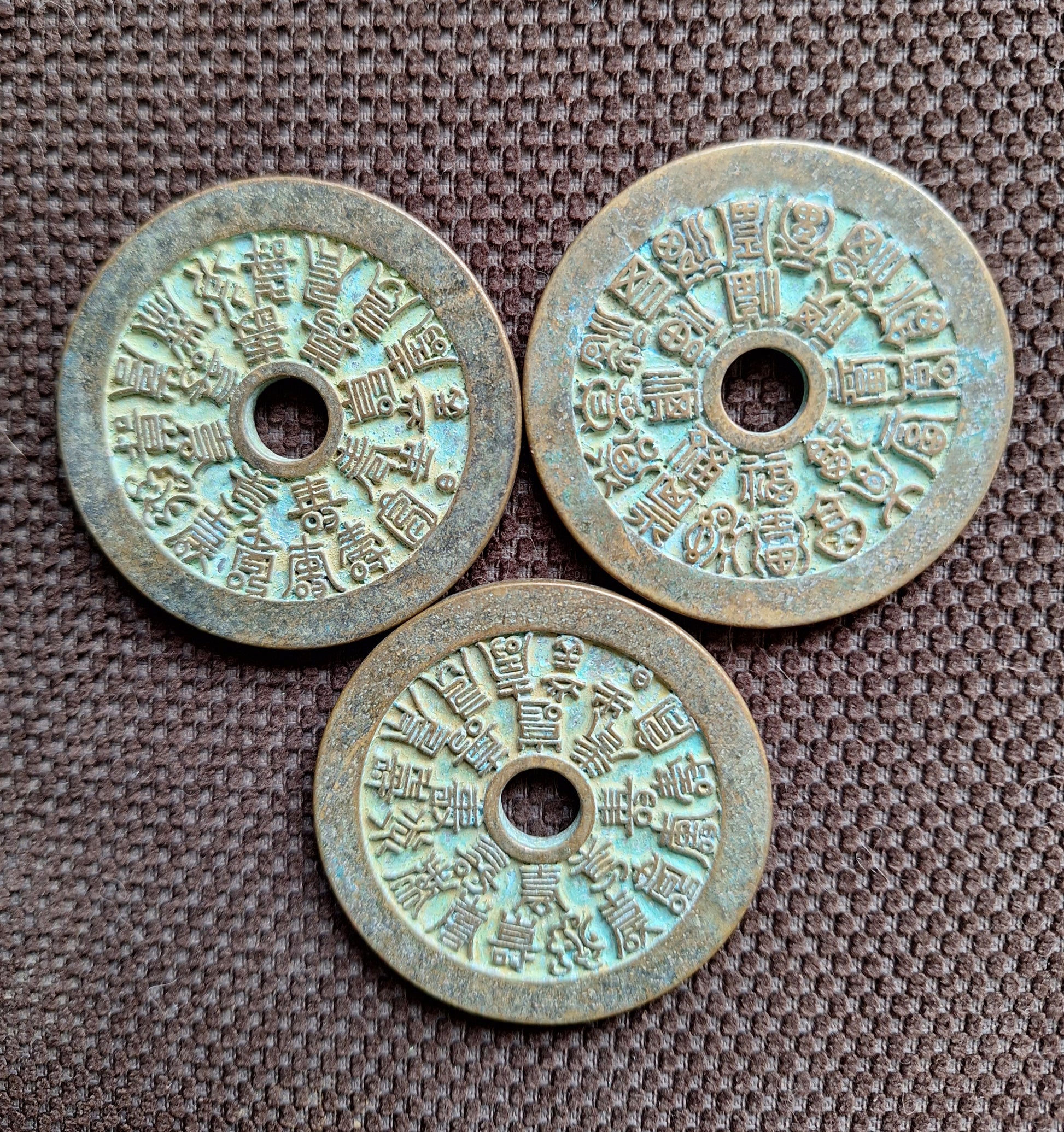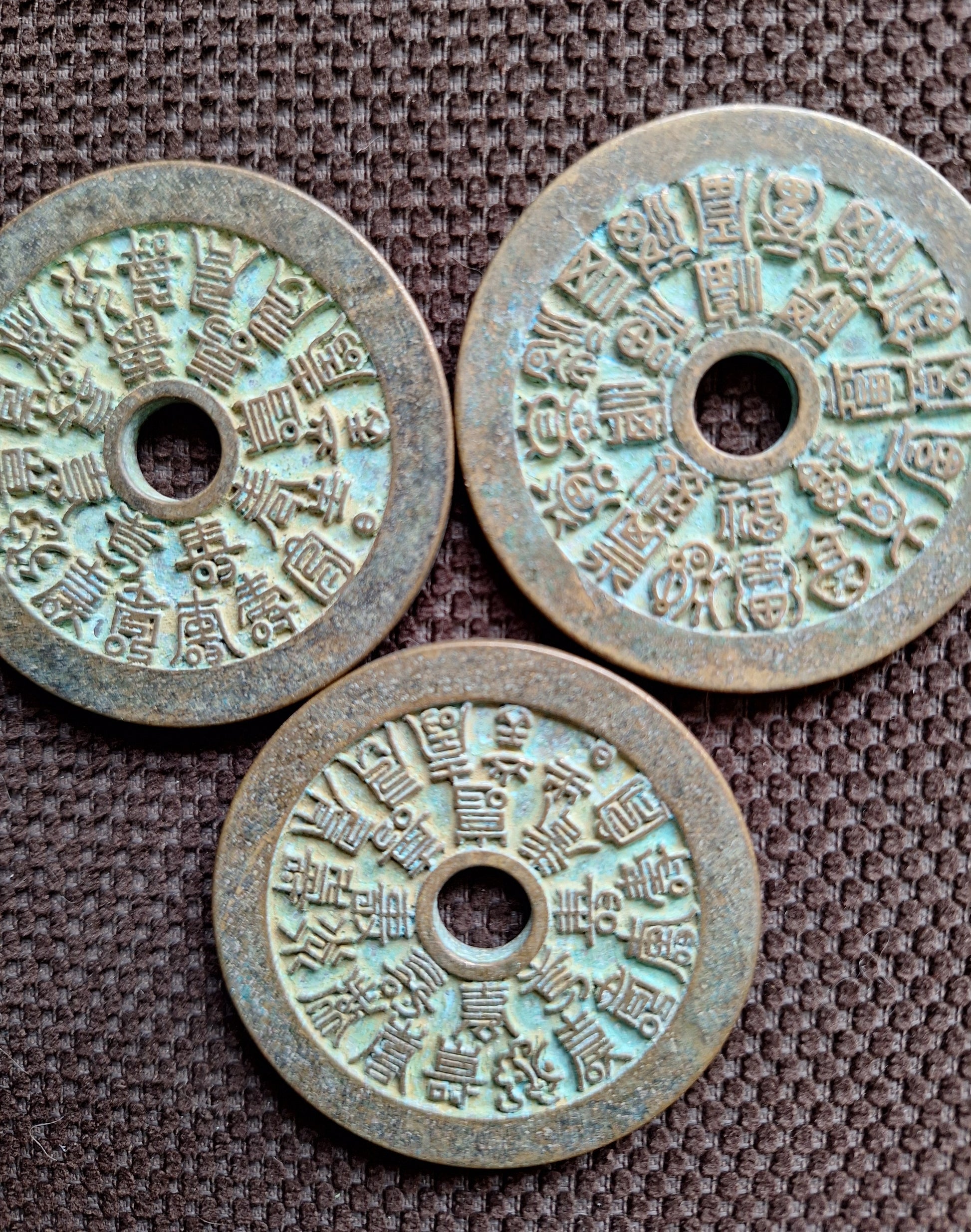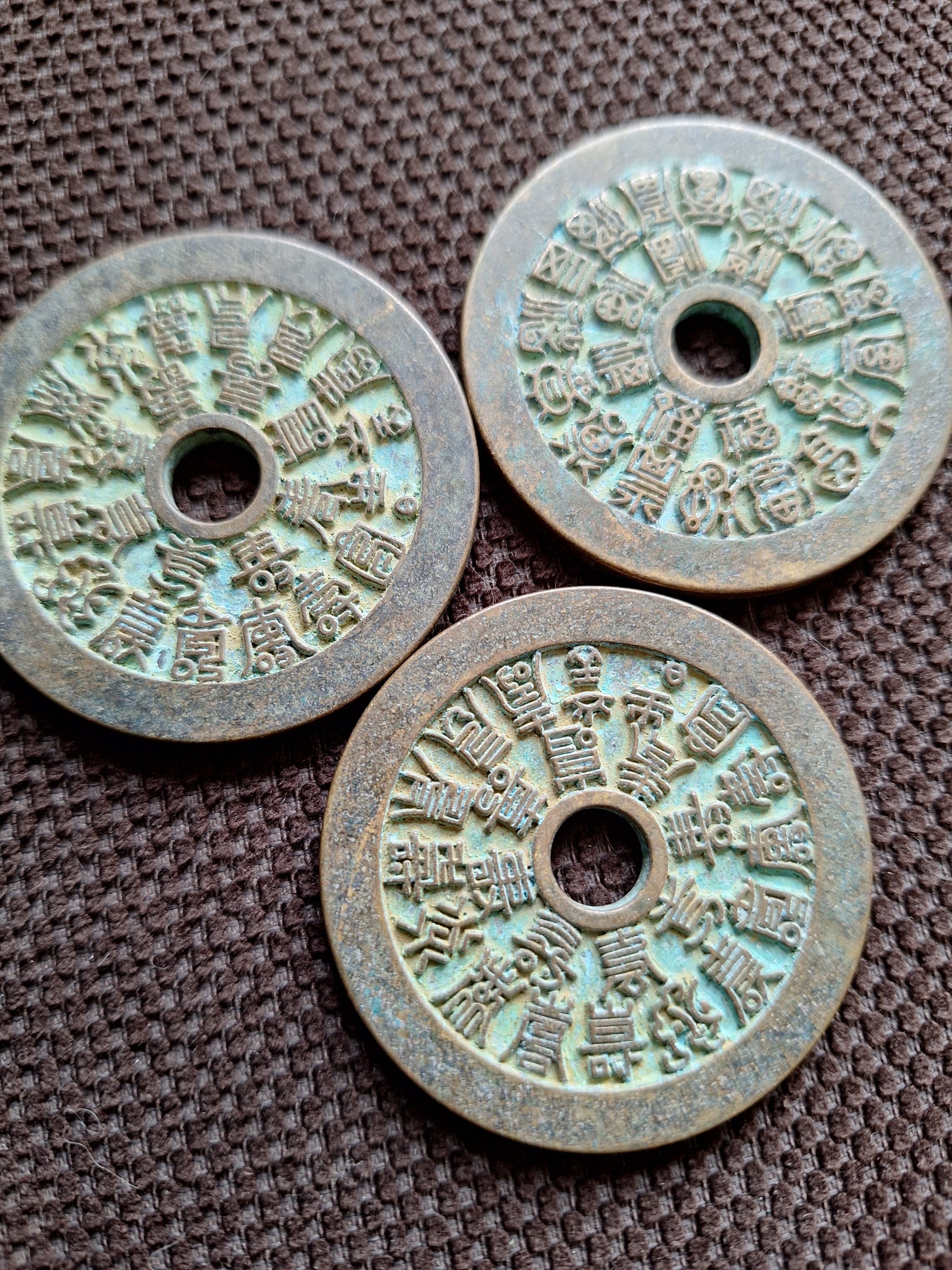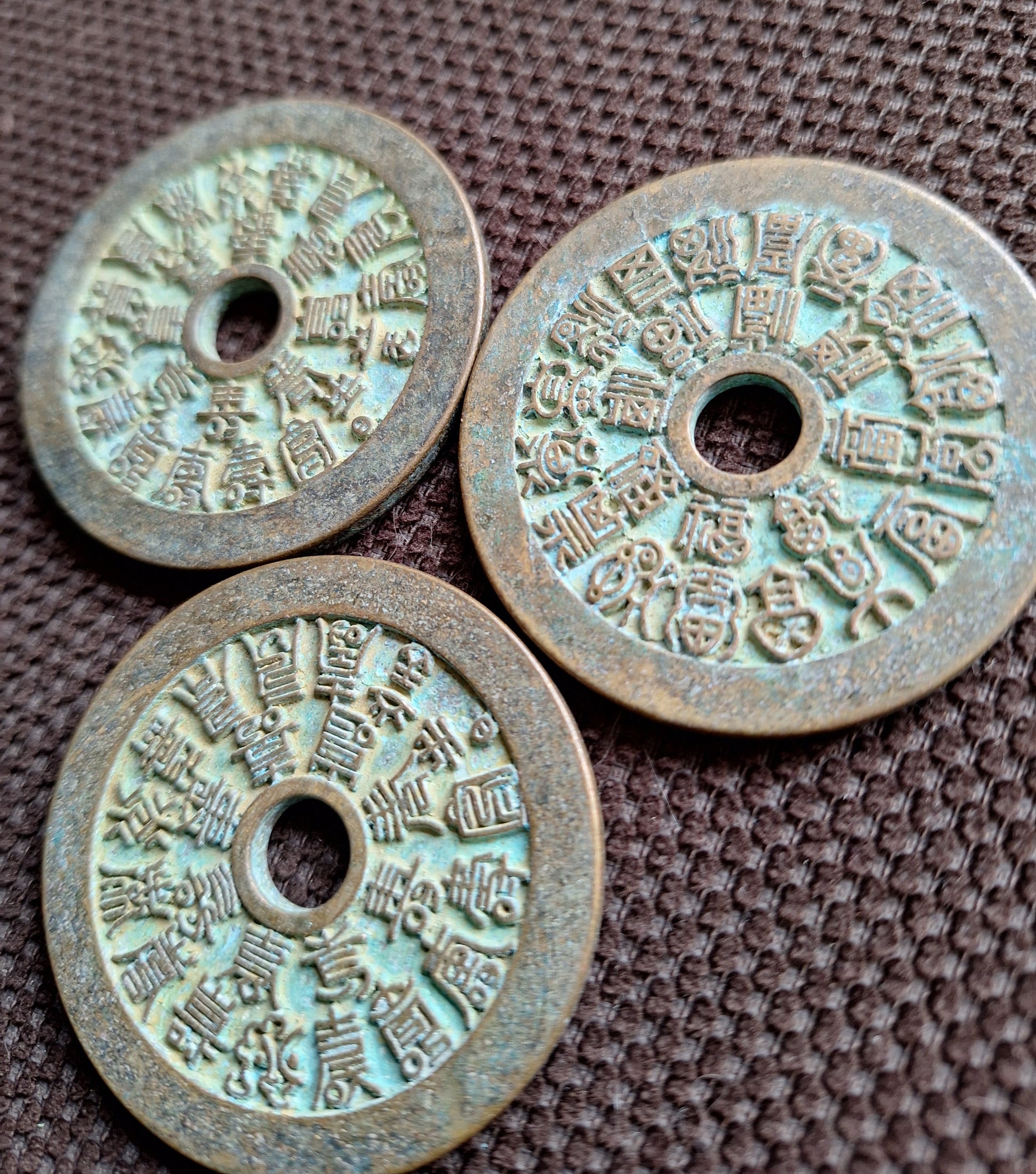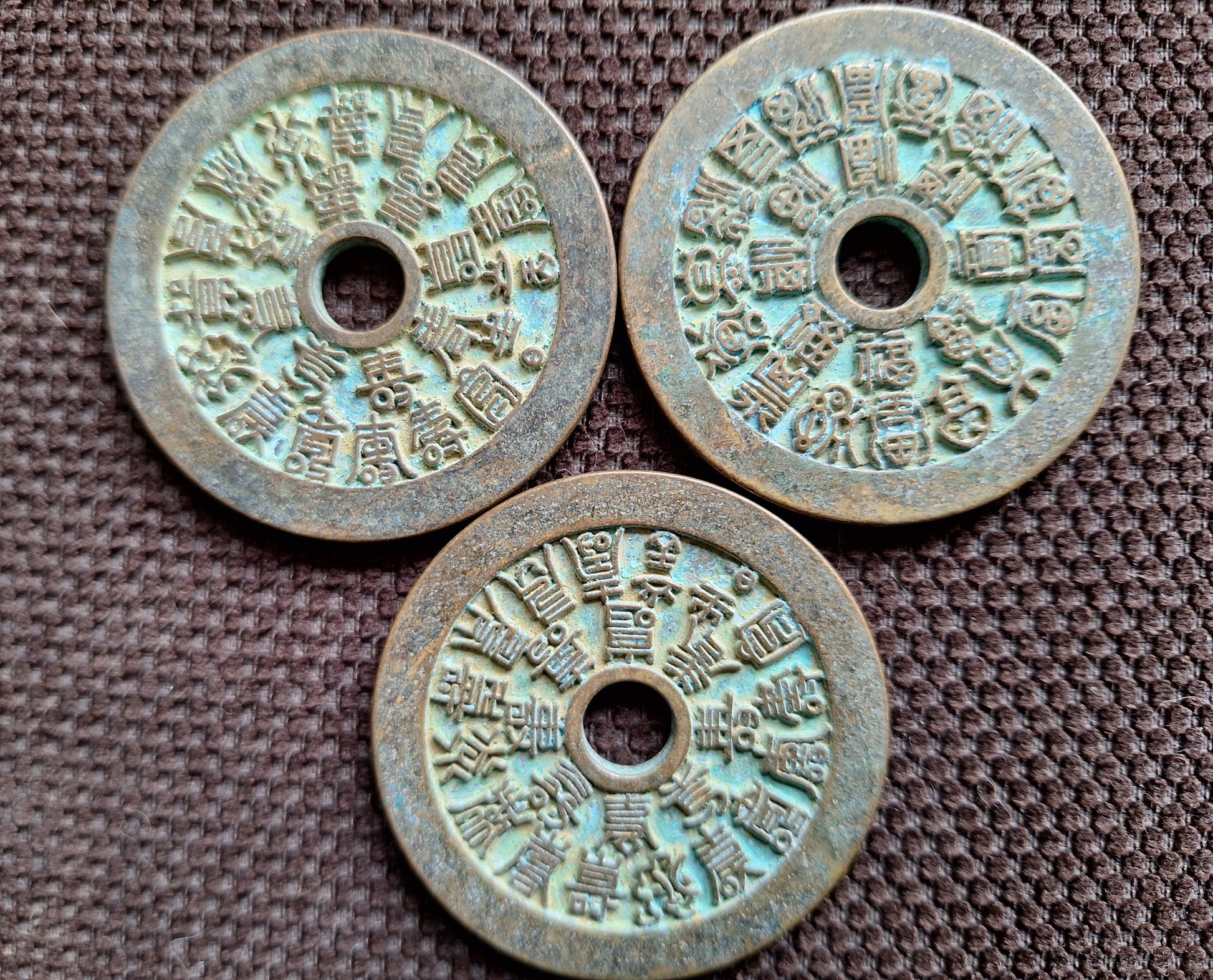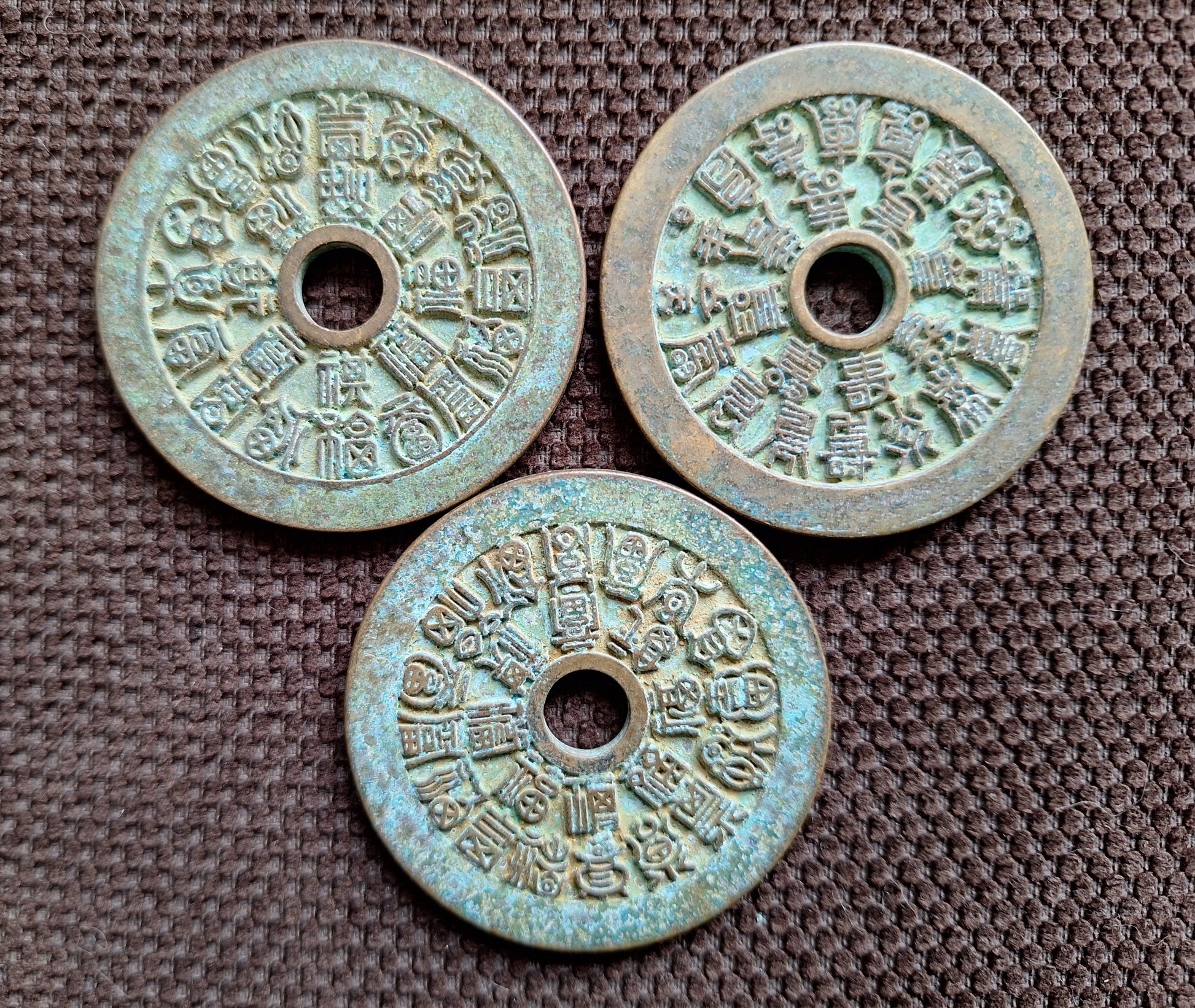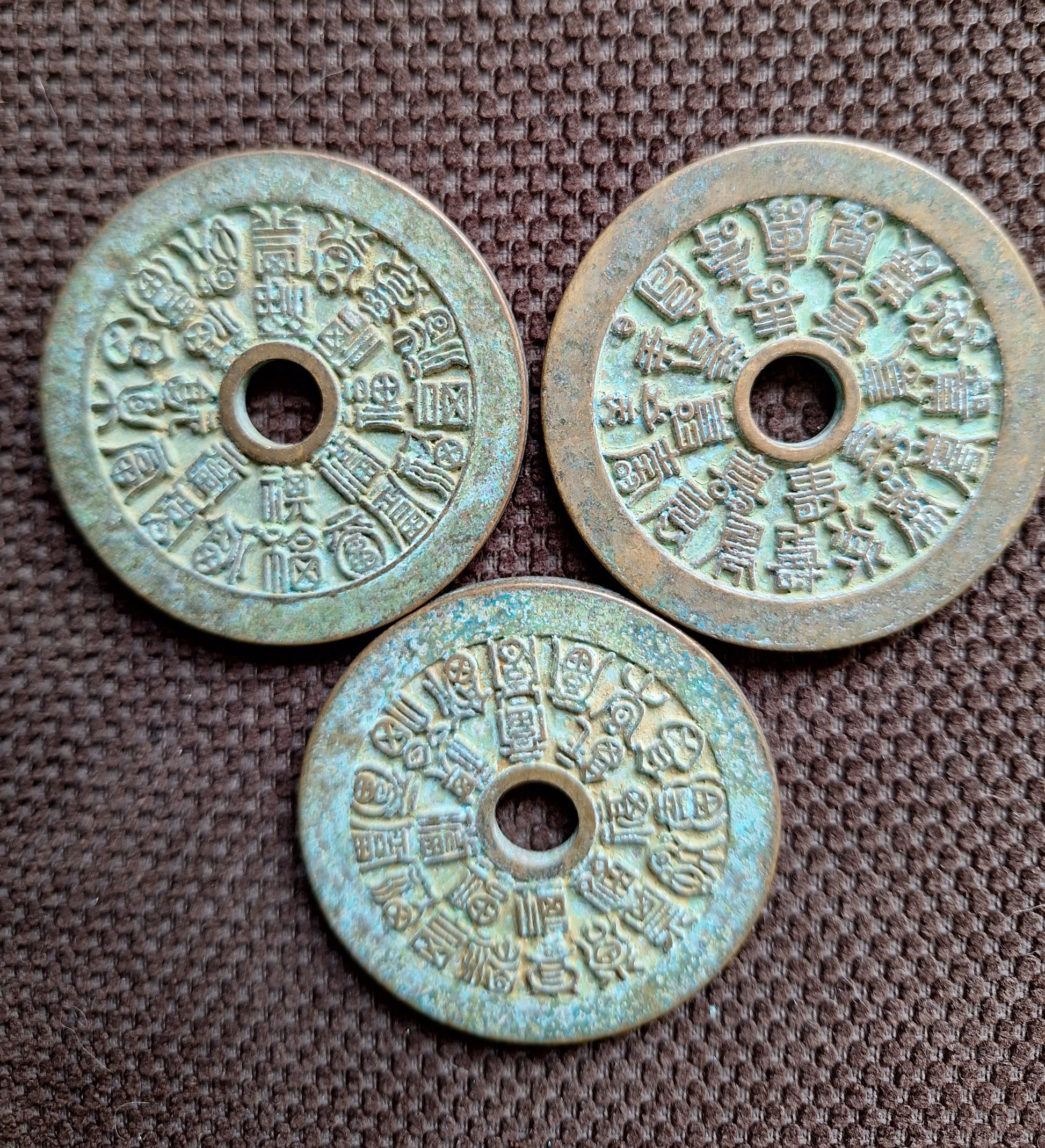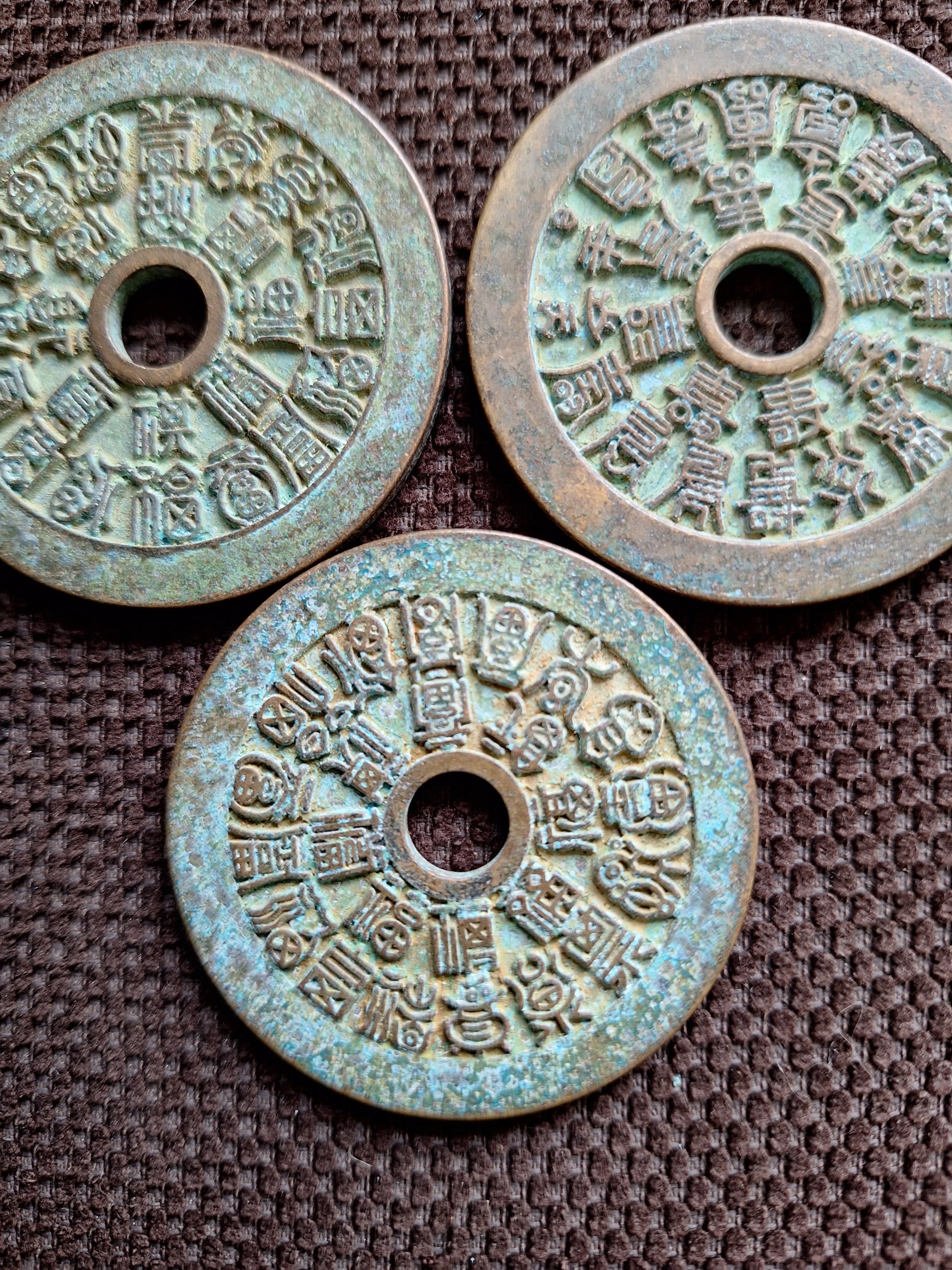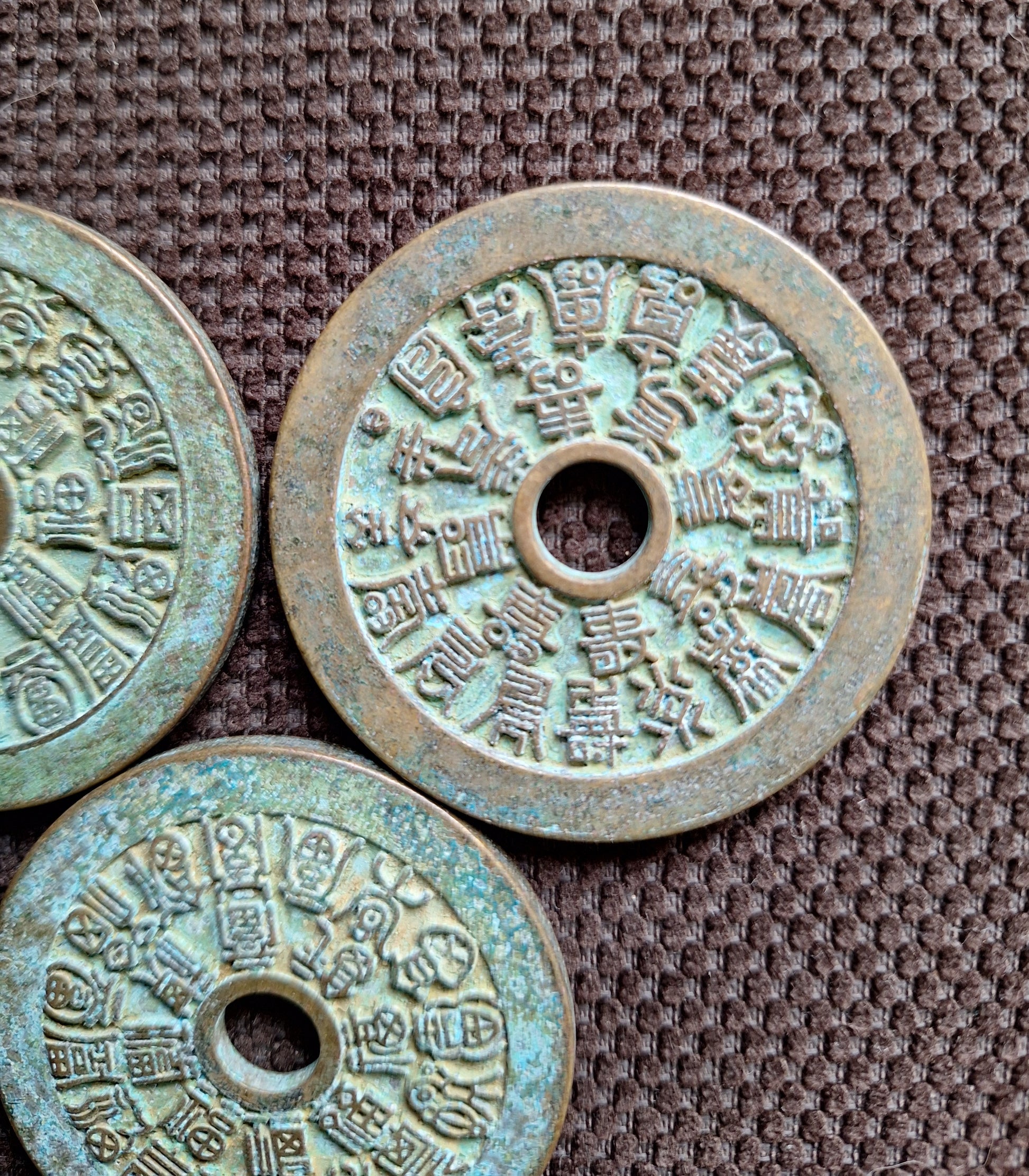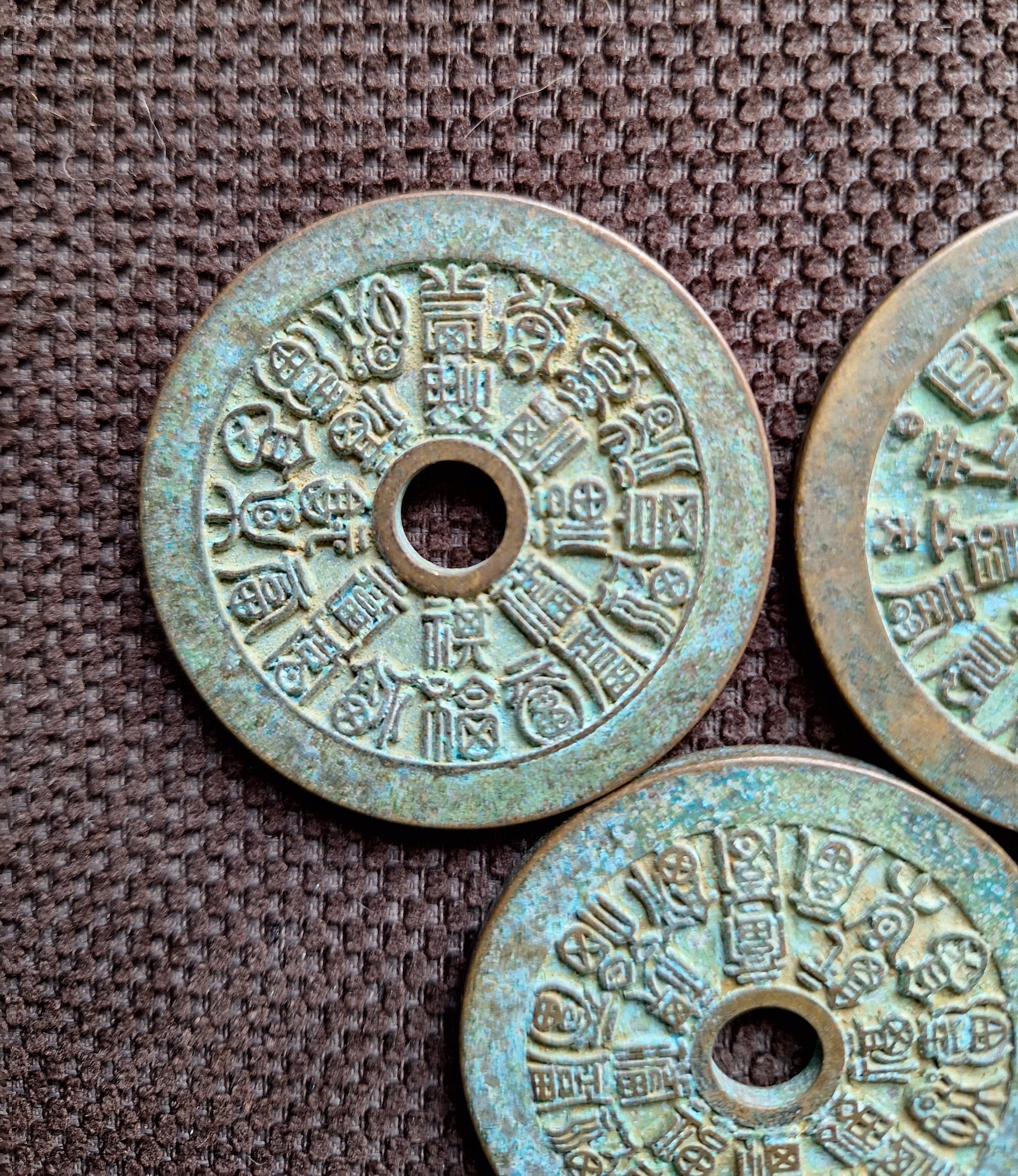Seawolf Shop
Vintage bronze numismatic charm 24 Characters
Vintage bronze numismatic charm 24 Characters
Couldn't load pickup availability
Share
Chinese numismatic charms, or' Yansheng coins' refer to a wide range of amulets and talismans manufactured in a coin-like style, which originated and became widespread during the Western Han Dynasty (2th century BCE). Inititally this started with the use of coins from former ruling dynasties and empires (coins that were of no longer use as currency) as talismans and amulets. Over time this developed into casting coins especially for this purpose (with symbols for good luck, wellwishes and prosperity).
Nowadays coin-like, numismatic charms are well-known as a commodity in itself. Think for example about the Feng Shui 'lucky coins'. The numismatic charms are used for a wide range of purposes, such as wearing them as personal amulets or using them for divination purposes. They can be found in many different types, styles and shapes.
These numismatic charms are made in the so called '24 character' style, referring to the fact that there are 24 Hanzi characters on each side of the coin. These characters are all kinds of variations on the characters for 'fu' (good luck) and 'shou' (longevity).
It is believed that the more characters a charm has, the more prosperity it brings, although there are different explanations as to why there have to be exactly 24 of them. One argument is that 24 is used as a multiple for the number eight, which is seen as an auspicious number in China because its pronounciation is similar to the word for 'good luck'. Other possible explanations refer to 24 being chosen because of the 24 directions of the Feng Shui compass, or the 24 solar terms on the traditional Chinese lunisolar calendar, or the 24 examples of filial piety from Confucianism.
These charms have a diameter of 48 millimeters and weigh 39 grams. They are made of bronze. These ones are from quite recent origin, but treated to look old, with a nice antique green patina.
Multiple ones available. We will handpick one at random for you.
